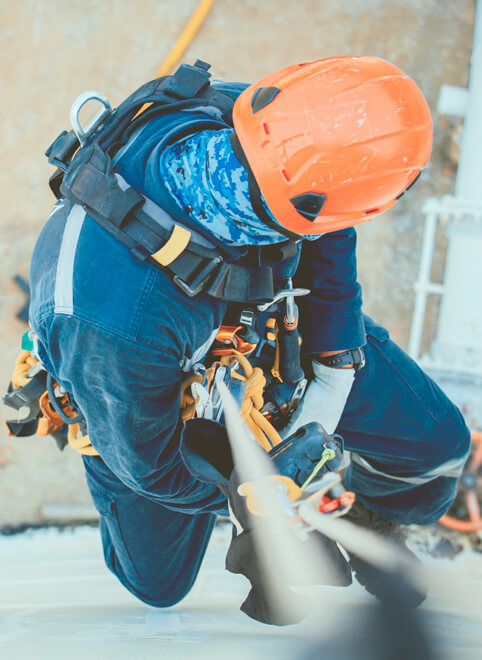Built by Safety Professionals
RESCUE & SAFETY SERVICES
RESCUE & SAFETY SERVICES
Rescue Mission: Our mission is to provide exceptional rescue services to our valued customers by deploying highly proficient and extensively trained rescue teams capable of efficiently handling diverse job requirements.
Rescue Mission: Our mission is to provide exceptional rescue services to our valued customers by deploying highly proficient and extensively trained rescue teams capable of efficiently handling diverse job requirements.
Rescue Services
Rescue Services
At IPS, we are committed to providing top-notch Stand-By Rescue Teams and Safety Personnel for projects of all sizes. Our well-staffed team is equipped to handle assignments ranging from quick one-day jobs to full-scale turnarounds.
We offer comprehensive and cost-effective confined space rescue services that conform to OSHA 1910 and 1914 regulations, as well as the NFPA 1006, 1670, and 1983 Recommended Practices. Our seasoned managers and rescue experts work closely with your staff to prevent potential issues and ensure that your employees comply with OSHA’s standards for confined space work.
IPS can also provide qualified safety professionals to support your safety culture in the field. Our highly trained personnel are capable of managing Job Safety Analysis (JSA), permit writing, inspections and audits, promoting exceptional safety practices, and motivating your team to approach their tasks from different angles.
Rescue Team
Standard Operating Procedures
Rescue Team
Standard Operating Procedures
Communication Plan: IPS will develop a comprehensive communication plan for each job that takes into account the distinct characteristics of the project and the personnel involved. In cases where a specific communication plan is unnecessary, we will establish the following hierarchy.
Considerations:
Before entry is initiated the following information is to be considered:
» Is there a victim?
» Are the actions to be taken, for a rescue or a recovery?
» Monitor the atmosphere for both current and possibly changing conditions.
» Proper ventilation
» What occurred to cause the entrant to become a victim?
» Develop or initiate a rescue plan to meet the situation prior to start of work.
» Use of a pre-entry briefing to update the rescue plan as needed to overcome any changing conditions or unexpected hazards.
» If conditions change (hazards encountered), in that a rescue crew is no longer equipped properly, return to entry point, re-evaluate, and re-enter when crew is properly equipped or manned.
Disputes:
If a dispute cannot be settled by the Lead person, the following is the chain of command regarding the settlement of issues and is not to be circumvented. Disciplinary action will be taken for not following the chain of command by unauthorized contact. The Lead person or their designee shall make the initial contact.
- Rescue Operations Manager
- Health, Safety, Environmental, Quality & Training Manager
- Operations Manager

IPS Fitness for Duty
IPS Fitness for Duty
This Prodedure is established by IPS to comply with Client policies and contractual Requirements.
All sub-contractors/employees are expected to be fit for duty (FFD) by being neither mentally nor physically impaired from any cause that could adversely affect safe, competent job performance. These impairments may result of physical illness, mental illness, improper diet, substance abuse or fatigue.
Sed porttitor lectus nibh. Vivamus magna justo, lacinia eget consectetur sed, convallis.
Rescue Technician Training Course
Rescue Technician Training Course
One of the most complex training procedures we provide is the “Rescue Technician” training course. This course runs a full week (50+ Hours) and is both classroom-based (Theoretical) and Hands on (Practical). The extensive training program was designed specifically for rescuers working in confined spaces, yet also carefully developed to meet all of the regulatory requirements and recommended practices, to ensure the safety and well-being of our employees while performing this type of work. The Rescue Technician course covers the following subjects and is in compliance with the following regulations and/or recommended practices:
» 29 CFR 1910.95 – Hearing Conservation (Noise Exposure Training)
» 29 CFR 1910.119 – PSM Contractor Responsibilities Training
» 29 CFR 1910.120(q) – HAZWOPER – (PPE Assessment & Training)
» 29 CFR 1910.134(k) – Respiratory Protection Training and Information
» 29 CFR 1910.146(g)(1)-(4) – Permit-Required Confined Space Training
» 29 CFR 1910.146(k)(2)(ii)-(iv) – Permit-Required Confined Space Rescue Training
» 29 CFR 1910.146(k)(2)(iii) – First Aid/CPR Training for Rescuers
» 29 CFR 1910.147(c)(7)(i) – Lock-Out/Tag-Out Training and Communication
» 29 CFR 1910.252 – Firewatch & Fire Prevention Training
» 29 CFR 1910.1020 – Bloodborne Pathogens Training
» 29 CFR 1910.1200(h) – Haz-Com “Right-to-Know”
» 29 CFR 1910.1028(j)(3)(i)-(iii) – Benzene Safety Protocol
» 30 CFR 250.67 & ANSI Z390.1 – H2S Safety Protocol
» 29 CFR 1926.251 – Rigging and Material Handling Safety Training
» 29 CFR 1926.451 – Ladder Safety Training
» 29 CFR 1926.503 – Fall Protection Training
» IPS – Inert Entry Operations Procedure (IEOP)
» IPS – Nitrogen Awareness
SAFETY ATTENDANTS
SAFETY ATTENDANTS
IPS Safety Attendants receive 12-hours of theoretical classroom training for Confined Space Attendant, Firewatch, PPE, fall protection, Haz-Com and LO/TO. They receive an additional 12-hours of hands-on field training.
All classroom training and hands-on and field training is site-specific oriented and includes customers permits, policies and procedures.
All full-time supervisors are tenured employees and have completed supervisor training, confined space rescue training, permit writer training, customer service training, OSHA 30 and conflict and confrontation resolution training.
- Safety Attendant billing rates are more competitive than “craftsman” billing rates.
- Craftsmen are not tied up performing attendant duties; therefore production is not adversely affected.
- The utilization of IPS Safety Attendants reduces the number of multiple contractor employees by having a centralized pool of trained safety attendant personnel that can be dispatched and assigned to all areas of the project, thus reducing the total man-hour costs of the project.

